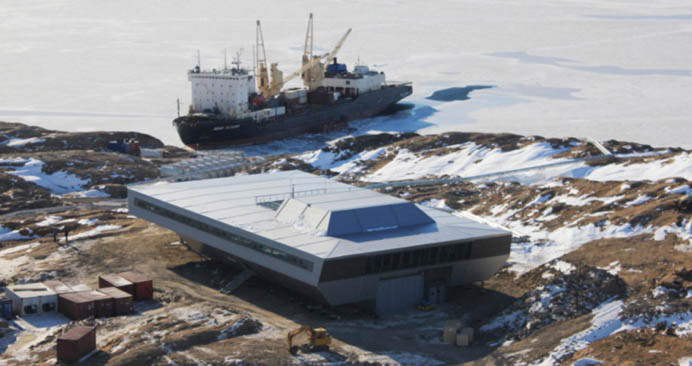Highlighting India’s national activities
 As part of our drive to promote SCAR’s national committees and feature the efforts of our members’ research communities, we are delighted to highlight the work of our colleagues from India. The Indian Antarctic Programme is the responsibility of the National Centre for Antarctic and Ocean Research (NCAOR), an autonomous organisation of the Ministry of Earth Sciences, Government of India. The national committee recently submitted its National Annual Report for 2016, including research highlights from the 2015-16 season.
As part of our drive to promote SCAR’s national committees and feature the efforts of our members’ research communities, we are delighted to highlight the work of our colleagues from India. The Indian Antarctic Programme is the responsibility of the National Centre for Antarctic and Ocean Research (NCAOR), an autonomous organisation of the Ministry of Earth Sciences, Government of India. The national committee recently submitted its National Annual Report for 2016, including research highlights from the 2015-16 season.
India’s first expedition to Antarctica was in 1981. Two years later, India signed the Antarctic Treaty, and constructed its first research base, Dakshin Gangotri, during the 1983-84 season. It joined the SCAR family on 1 October 1984.
India’s second base, Maitri, was opened in 1989, shortly before Dakshin Gangotri was buried in ice and abandoned (but it continues to be used as a supply base). Maitri is a year-round station, located in the Schirmacher Oasis, where geomorphologic mapping is carried out along with emphasis on atmospheric-biological-glaciological-earth science research. This was followed in 2012 by the construction of Bharati station, located in the Larsemann Hills. Bharati’s proximity to the coast enables oceanographic research, along with the study of continental drift, adding to the understanding of the geological history of the Indian subcontinent and its linkages to Godwana.
Research highlights from the past season include studies in meteorology and atmospheric measurements, climate change research, sea ice and ice shelf dynamics, glaciological studies of the Larsemann Hills, topographical mapping, geophysical and geological investigations, seismological recording, past-climate reconstruction from lake sediments, environmental and wildlife monitoring, and even a study on the effect of yogic practices in Antarctica!
View the 2016 National Annual Report from India.
